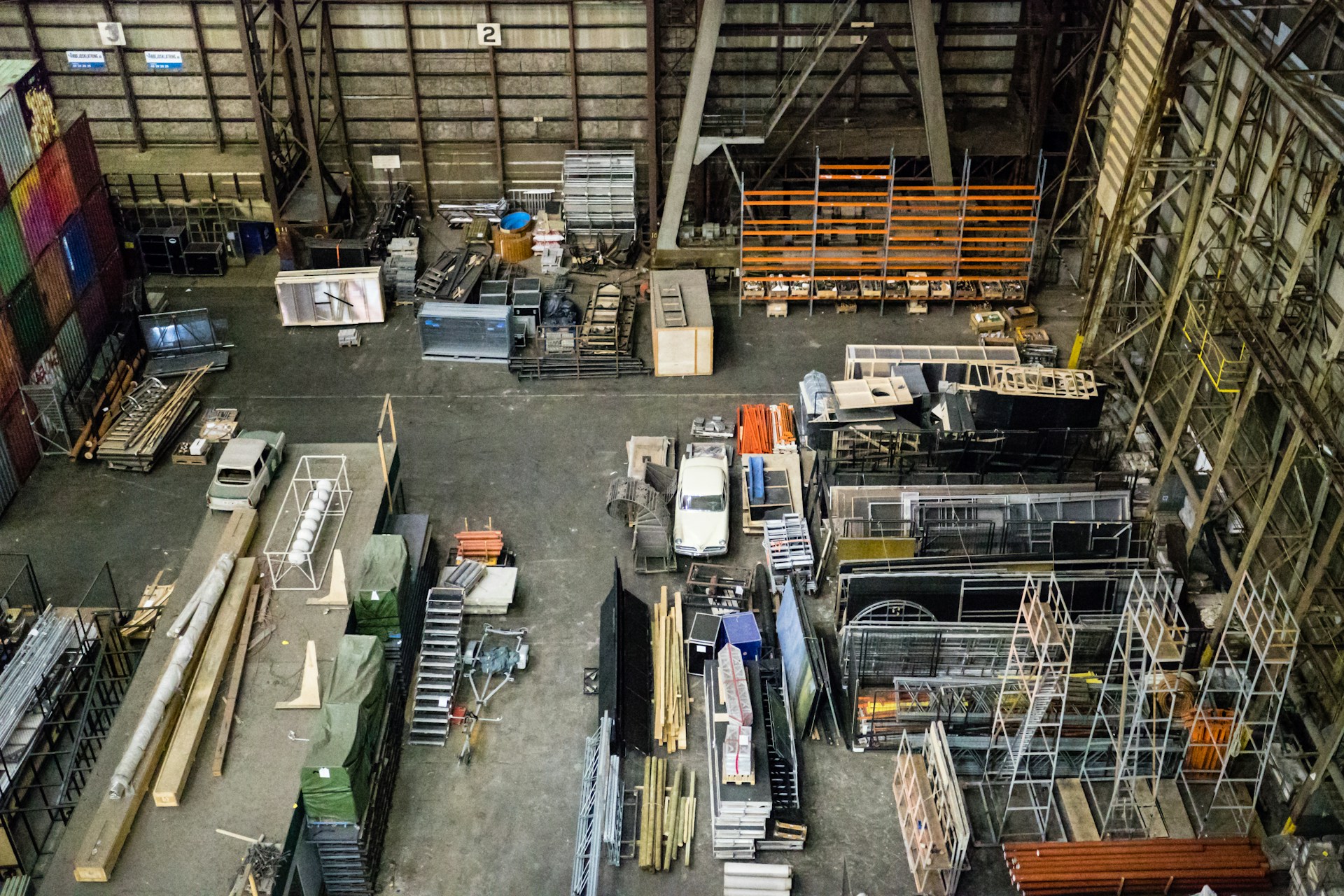Whit Taylor is a cartoonist, writer, and editor from New Jersey. She received a Glyph Award for her mini-comic Watermelon in 2012 and an Ignatz nomination for her series Madtown High in 2013. Some of her recent work includes The Anthropologists (Sparkplug Books), comics essays for The Nib, and Subcultures: A Comics Anthology, which she edited for Ninth Art Press. She has written for Panel Patter, Comics Workbook Magazine, The Tiny Report, and The Comics Journal.
Whit Taylor and I met up in Brooklyn on a Monday morning in the stinky-NYC month of August. After trying to find a quiet spot inside two cafes, we took our gourmet pop-tarts and coffees to a small park. There are so many innovative and challenging elements about Whit’s work as a cartoonist, writer and editor, it was hard to know where to start.
Inspired by personal experiences, science, culture and politics, Whit makes the personal universal – the universal personal, while drawing you into a world that quickly had me philosophizing on the park bench, and then laughing aloud on the subway as I read her comics on the way home.
“Cartoonist,” “comic writer,” “artist,” these are words I saw online that different people use to talk about you, and I didn’t know if you use those words yourself. What do they mean to you?
I like the term “cartoonist” personally, I don’t know why, I feel like it encapsulates everything that I do. In the mainstream comic world–you know Marvel, DC, more superhero type stuff—there’s more specialization. There’s the inker, the penciler, the writer, the letterer, and they often work as a team. In indie/alternative comics, generally one person does it all: they write it, they draw it, they do all of that. It’s great that you can get a really cohesive piece of work that realizes one person’s vision, but also potentially problematic – if you’re not as strong in one aspect, such as draftsmanship or writing. So, I like the term “cartoonist” because I feel like it covers everything [laughs]. I do all of it.
Is it common to have cartoons that are drawn by one person and written by another?
Yeah, sometimes. I’m seeing it more and more, especially as comics bleed into academia and people who have expertise in a certain topic need someone to illustrate concepts for them. Which conversely can be work if an artist is not as well-informed about a topic, and desires a more confident writer. In either case, understanding the basic language and conventions of comics is necessary.
How do cartoons and comics fit into the graphic novel format?
There are different formats, comics is just the medium. You could have a webcomic, and that could be short or long form, you could have a “floppy,” which is a self-contained story or a serialized story. A graphic novel is a book format. Graphic novels can be written continuously, which is a lengthy process, often made easier by having the time and financial support to do so. Often graphic novels are collected serialized stories by cartoonists who at the time did not have the means or status in the beginning to be able to get published. Things are becoming a bit less rigid now though with crowdfunding options like Kickstarter. And then a minicomic is a comic that’s usually self-published or published by a small press in a lower print run. These are often assembled by hand.
As someone who’s art form isn’t traditionally thought of as art, have you ever been told that what you do isn’t art?
Yeah, I think that’s historically happened in comics in general. Comics were thought of as a form of entertainment, especially because they were associated with superheroes, horror, gags, escapism, and fantasy. You know, stuff for kids, geeks, collectors, and superfans. It’s only been in the last decade or so, with graphic novels like Persepolis or Fun Home, that things are perceived as having a literary bend to them. People outside of comics circles have started to see comics as more than a “low art”. This is also evident by the fact that a lot of art schools, up until recently (and still some) did not have comics programs because they did not consider it a legitimate art form. It is an art form. There are a lot of different skill sets needed to make comics. So anybody who says that, at this point, I just don’t think they’re well-informed about a medium that’s quite diverse and expansive.
You said that you’ve been doing cartoons and illustrations since you were a child, how did that start?
Well, I actually didn’t like reading as a kid. I’ve always had some attention issues and found it very difficult to do assigned fiction reading. My mom was like, ‘oh maybe if I get you into comics it’ll ease you into reading.’ So she took me to a comic book shop in second grade, and I became obsessed. I started reading a lot of Archie and some Marvel comics and just kind of stuck with it. I’d always been drawing and making picture books with my brother. I stopped in high school for a period because I had an art teacher who just didn’t like me and I became discouraged. I didn’t start drawing again until late college. I was living in Providence and went to some bookstore and they had a lot of cool graphic novels and alternative comics and I’d never really seen anything like that before. I remember picking up a Harvey Pekar book and being like, I didn’t know you could write about your own life! I also saw Roz Chast lecture about her New Yorker cartoons at RISD, and it made me realize that there were women out there making comics, which was quite life-changing. So I started making short comic strips, and then over time, started going to small press shows, getting to know people, sending my work out for review, taking the feedback and trying to incorporate it.
Have you played with other kinds of art outside of comics?
Yeah, I’ve done a little bit of printmaking. It’s so cool and I really wish I could do it more. I’ve dabbled in painting. I’ve taken some art courses but I didn’t go to art school. I’ve done a general survey of art and I really want to try to get into different mediums more but comics feel automatic to me. I think it’s because I really like writing.
In filmmaking, which I’m involved in, there are a lot of rules, if your piece doesn’t abide by those rules, it’s considered a video. So I’m wondering if there’s an equivalent in your world, where there’s distinctions of status, rules, and rule-breaking?
Totally. There are basic conventions in comics, you know, specific, standardized techniques for draftsmanship, such as having a handle on perspective and anatomy. I think it’s important to understand these, but I don’t think that you necessarily have to abide by all of the conventions out there as long as you are able to communicate clearly and effectively. But yeah, I, for instance, use markers to color often, and sometimes I’m at shows and attendees are like, oh is this a kid’s book? And I’m like, no this is not for kids [laughs]. I think that you should be allowed to break rules. I think there can be double standards though. Some people are able to get away with breaking rules and they’re thought of as artistic geniuses and other people do the same thing and they’re thought of as being rudimentary and there’s usually a lot of politics involved in why that is.
You were just saying that the way you draw people is one of the things that gets critiqued a lot, but is an intentional choice. Are there other things that suffer that judgment?
Mostly my drawing. When I started making comics, a lot of my style was coming from not knowing how to draw comfortably and taking shortcuts. Now, I’ve drawn a lot [laughs], so at this point, it’s not because I can’t do it the “right way,” it’s because I’m choosing to do it this way. And I feel okay with that, I feel okay making my hair look really cartoony, or making limbs look a little weird, or making lettering look a little scratchy. Simple and flat: that’s what I like doing. The thing I get confused about is that sometimes there’s so much emphasis on beautiful art but there’s no attention to crafting the story. And it’s like, this is beautiful to look at but I can’t connect to it. I appreciate and admire beautiful art but I don’t think that the artistic technique guarantees a great comic.
How are you thinking of your audience right now?
It’s changed throughout my whole career. When I first started, I was making comics for my friends, so what I cared about was making them laugh and also making my brother laugh. And then, as I started putting more stuff out in public, I think I was primarily concerned with the people within the indie comics community and getting their approval. I care about my peers and what they’re doing and if they like what I’m doing, but I can’t worry about that too much. I realize that at different times I’ve worried about being pigeonholed as just a “Black Cartoonist,” especially as somebody who often writes about race, but that’s been both deliberate and unavoidable as a black autobio cartoonist. It’s a weird place I find myself in because the most press I’ll get is from media sites or people who are from the black community, and that’s great because I want to make work that other people of color can relate to but I don’t want to marginalize myself either. I find a lot of times I get asked to do things about race, and it’s great but it’s also limiting.
Do you feel like there are specific things you do as to not be pigeonholed?
I just want to keep making stuff that people wouldn’t expect me to make. I have tons of stories that I want to draw that are not about race. Conversely, writing about race may also be the thing that limits my “marketability” or publishing options. I hate that I can say that, but it’s kind of true. It’s not unique to me though, unfortunately.
I’m guest-editing an issue of Comics Workbook Magazine, which is due in November. It’s the brainchild of cartoonist Frank Santoro, as well as Andrew White and Zach Mason and features short comics as well as comics-related interviews, reviews, and essays from various alternative/indie cartoonists. I’m excited for the group of artists who are included. I’m working with a publisher on this book that I’m suppose to be done with next year, 2016–I’m not sure exactly when it’s coming out. I can’t really talk much more about it, but it’s going to be an educational comic, you know, comics journalism. There’s a lot of fact-checking going on currently, which is a bit different for me than when I make autobio or fiction comics. So that’s fun—it’s different, it’s challenging. I started doing non-fiction comics at The Nib, which was a Medium comics site edited by Pulitzer Prize nominated political cartoonist Matt Bors. He’s doing a ‘best of The Nib’ book that’s coming out in September, and I’ve got a piece in there.
Right now, yeah, I’m doing it at my place. I’d like to get studio space one day where I can work alongside other people, because one of the problems is that cartooning can be a solitary profession. I think it also attracts a lot of introverts and I think I’m pretty introverted. Too much time alone maybe isn’t that great, especially if you’re a neurotic. So I try to listen to music and podcasts and keep myself more in the world.Well, it’s been fun for me to get to watch you on social media. Does that end up being useful within your profession?
I think it’s pretty crucial and it’s interesting to talk to other cartoonists and listen to them because years ago you didn’t need social media to be a cartoonist. I think having a social media presence is required today. I try to set limits. I tend to use Facebook more and have tried to get into Twitter, but I get a little overwhelmed. It’s good to keep in touch with people, but the downside is that it can distract from actually making work!
I’m really into botanical prints and illustrations, animal prints, anything nature related. I’ve always been a bit of a science nerd; textbooks, atlases, charts, diagrams, things like that. I like going to museums, especially natural history museums. I like reading mythology. Actually, the piece I’m working on right now goes a little bit into Joseph Campbell and the “hero’s journey.” Just because they’re basic stories about the human condition. On another note, I’m also currently obsessed with stand-up comedy. In terms of cartoonists, there are so many talented creators right now. I really like Yumi Sakugawa. Her comics explore a lot of ideas relating to mindfulness, reflection, identity, and culture. Her artwork is deceivingly simple but really powerful and I like her use of words, they’re sparse but really important. Recently, I’ve enjoyed work by Jillian & Mariko Tamaki, Mimi Pond, and Leslie Stein to name a few.You said you are working on some autobiographical story lines. What is the major themes you’re working with?
Well, it’s interesting. This year has been one of the more atypical years for me, I’ve gotten some cool comics-related opportunities but I went through a period where I didn’t really draw or make comics for some time.Prior to that, it was almost a compulsion to create. Even after working a full day job, I would draw until I went to sleep. I don’t know if that was the healthiest thing but I kind of burned myself out. Then, this period where I couldn’t produce art was important in letting me know that my cartooning didn’t define me. I think when you identify as being a creator, where that’s your mission, if you can’t, then you’re like, who am I? It’s like, you’re still a person, you’re still you, it’s okay.
Well, I think any trauma, loss or other life altering experience takes time to process. You try to make sense of it and then integrate it. Then you have to come back into the world. With things like a sexual assault, it’s often difficult not knowing how to talk about it, which leads to greater feelings of isolation, and a longer healing process. So my goal is to try to make the conversation possible.Do you feel like other things you’ve made could make people uncomfortable? Personally, I kind of like making people uncomfortable, I don’t mind admitting it.
I do too. I feel like a lot of my work does that. I actually aim for that, sometimes. I write about race a lot, which can be tricky. One of my first comics was called, “Watermelon… and other things that make me uncomfortable as a black person”, which I won a Glyph Award for. Glyph is an award for African American creators. I tried to break down different racially charged issues that people don’t like to talk about such as hair, music, and Black History Month; with a light, somewhat humorous touch. I write about mental health because I’ve dealt with depression and anxiety before. I think mental health comics are a big thing now, which is great. I’ve also tried to create comics where there’s not necessarily a big issue or point at hand.
When I started, one of the hardest things was the whole praise-blame part. You know, “Praise and blame are all the same”? I believe that. When I started sending things out for review, I’d sometimes get criticism about my art, which was hard, but then I’d also get praised about certain things, like, oh this is really well written. And I had to take both of those and listen to them and then put them into perspective. I think it’s important to get feedback and to consider it and evaluate it, but you can’t get bogged down by people thinking you’re awesome or people thinking you’re terrible. You have to do what you think is important and refine it. Also, developing style and getting good at something takes a lot of time.










